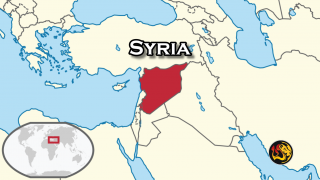Discovery In Syria Shows Alphabet Older Than Thought

By Stefan J. Bos, Chief International Correspondent Worthy News
BALTIMORE/DAMASCUS (Worthy News) – A shocking scientific finding in Syria challenges the long-held assumption that the ancient Egyptians created the first alphabet.
The discovered writing, dated to around 2400 before Christ, precedes other known alphabetic scripts by roughly 500 years, according to researchers at Johns Hopkins University in Baltimore, Maryland.
Glenn Schwartz, a professor of archaeology at the prominent U.S. university, noted that “our artifacts are older and from a different area on the map, suggesting the alphabet may have an entirely different origin story than we thought.”
He explained, “Previously, scholars thought the alphabet was invented in or around Egypt sometime after 1900 BCE,” referring to the period before Christ.
The finger-length cylinders were found at Tell Umm-el Marra, a former city in today’s northwestern Syria, once a bustling crossroads for two trade routes.
“Carbon dating techniques reveal that the objects date back 4,400 years to 2400 [Before Christ] BC – preceding any other known alphabetic scripts by roughly 500 years,” the university said.
According to researchers, it could reveal the insides of early urban civilizations.
PEOPLE EXPERIMENTING
“Alphabets revolutionized writing by making it accessible to people beyond royalty and the social elite. Alphabetic writing changed the way people lived, how they thought, how they communicated,” said Schwartz in a statement seen by Worthy News.
“And this new discovery shows that people were experimenting with new communication technologies much earlier and in a different location than we had imagined before now,” he added.
A Near Eastern archaeologist, Schwartz studies how early urban areas developed throughout Syria and how smaller cities emerged in the region.
With colleagues from the University of Amsterdam, he co-directed a 16-year-long archaeological dig at Tell Umm-el Marra, one of the first medium-sized urban centers to emerge in western Syria.
At Umm-el Marra, the archaeologists also uncovered tombs dating back to the Early Bronze Age. One of the best-preserved tombs contained six skeletons, gold and silver jewelry, cookware, a spearhead, and intact pottery vessels.
Next to the pottery, the researchers found four lightly baked clay cylinders with what seemed to be alphabetic writing on them. “The cylinders were perforated, so I’m imagining a string tethering them to another object to act as a label. Maybe they detail the contents of a vessel, or maybe where the vessel came from, or who it belonged to,” Schwartz stressed. “Without a means to translate the writing, we can only speculate.”
Yet, with technology fast developing, researchers have reasons to hope those mysteries will be revealed someday.
If you are interested in articles produced by Worthy News, please check out our FREE sydication service available to churches or online Christian ministries. To find out more, visit Worthy Plugins.
